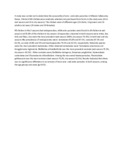| dc.contributor.author | Chege, HW | |
| dc.contributor.author | Kemboi, DC | |
| dc.contributor.author | Bebora, LC | |
| dc.contributor.author | Maingi, N | |
| dc.contributor.author | Mbuthia, PG | |
| dc.contributor.author | Nyaga, PN | |
| dc.contributor.author | Njagi, LW | |
| dc.contributor.author | Githinji, J | |
| dc.date.accessioned | 2015-09-16T06:57:18Z | |
| dc.date.available | 2015-09-16T06:57:18Z | |
| dc.date.issued | 2015 | |
| dc.identifier.citation | Chege H W, Kemboi D C, Bebora L C, Maingi N, Mbuthia P G, Nyaga P N, Njagi LW and Githinji J 2015: Studies on seasonal prevalence of ecto- and endo-parasites in indigenous chicken of Mbeere Subcounty, Kenya. Livestock Research for Rural Development. Volume 27, Article #113. Retrieved September 16, 2015, from http://www.lrrd.org/lrrd27/6/cheg27113.htm | en_US |
| dc.identifier.uri | http://lrrd.cipav.org.co/lrrd27/6/cheg27113.htm | |
| dc.identifier.uri | http://hdl.handle.net/11295/91107 | |
| dc.description.abstract | A study was carried out to determine the seasonality of ecto- and endo-parasites in Mbeere Subcounty, Kenya. A total of 48 chicken were randomly selected and purchased from farms in the study area (24 in wet season and 24 in dry season). The chicken were of different ages (16 chicks, 16 growers and 16 adults) and sexes (19 males and 29 females).
All chicken in the 2 seasons had endoparasites, while ecto-parasites were found in all chicken in wet season and 95.8% of the chicken in dry season. Ectoparasites observed in both seasons were mites, lice, ticks and fleas. Lice were the most prevalent (wet season 100%; dry season 70.4%). In both wet and dry seasons the prevalences of endoparasites were: nematodes 95.8% and 87.5%, cestodes 87.5% and 83.3%, coccidia 20.8% and 0% and haemoparasites 79.2% and 62.5%, respectively. Heterakis species were the most prevalent nematodes. Other detected nematodes were Tetrameres americana and Gongylonema ingluvicola. Raillietina echinobothrida was the most prevalent cestode (wet season 79.2%; dry season 62.5%). Other cestodes were; Raillietina tetragona, Davaenea proglottina, Hymenolepis cantaniana and Choanotaenia infundibulum. Among the recovered haemoparasites, Plasmodium gallinaceum was the most common (wet season 79.2%; dry season 62.5%). Results indicated that there was no significance difference in occurrence of most ecto- and endo-parasites in both seasons, among the age groups and sexes (p>0.05). | en_US |
| dc.language.iso | en | en_US |
| dc.publisher | University of Nairobi | en_US |
| dc.subject | chicken, prevalence, wet and dry seasons | en_US |
| dc.title | Studies on seasonal prevalence of ecto- and endo-parasites in indigenous chicken of Mbeere Subcounty, Kenya | en_US |
| dc.type | Article | en_US |
| dc.type.material | en | en_US |

